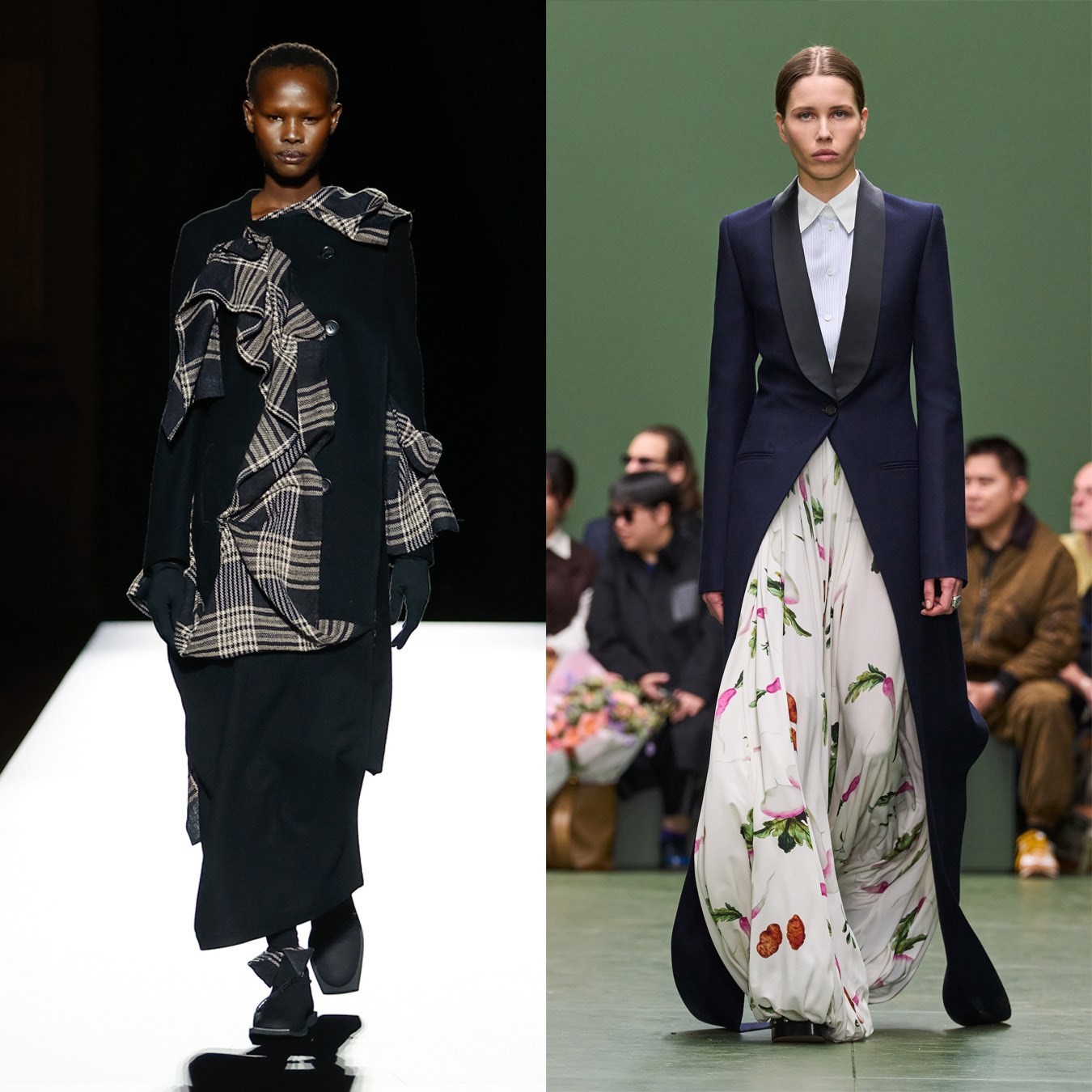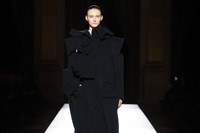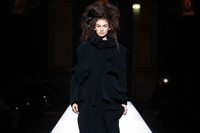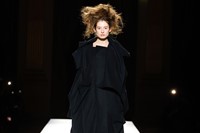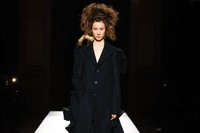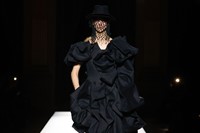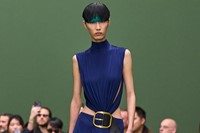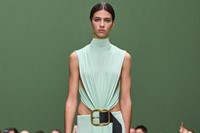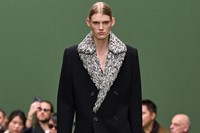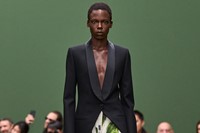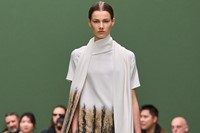On Friday, in two very different locations in Paris, two very different designers were playing the same ball game: great fashion, perfectly timed, expressive of both the moment we live in and their individual talents. Those designers were Jonathan Anderson of Loewe, and Yohji Yamamoto, who is sometimes of Adidas but here was utterly of himself.
These two, although both at the top of their game, are unexpected bedfellows. Yamamoto, who was born and is based in Japan, turned 80 last year; the Irish-born Anderson was only born in 1984, three years after Yamamoto’s first Paris show. And Anderson’s shows are pyrotechnic displays of prowess and product, both under the JW Anderson name in London and, especially, as Loewe in Paris. The latest Loewe show was staged in a green labyrinth that recalled a hedge-maze or, perhaps, an expanse of wall in a discreet national gallery, hung with paintings. It was custom-built in the courtyard of the Château de Vincennes. Yamamoto’s clothes, by contrast, are resolutely discreet. His label is his scribbled signature, and he staged his show on a black raised catwalk in the jzushy chandelier-ed ballroom of the Hôtel de Ville. There were no handbags at Yamamoto whereas, at Loewe, Anderson’s inventive eye for accessories has helped transform a sleepy Spanish leatherwoods label into a luxury juggernaut.
But let’s talk about clothes rather than handbags, because there were connections between Anderson’s Loewe and Yamamoto’s Yamamoto that were deep and meaningful. Both had echoes that were lushly historic – especially of the nineteenth century, combining elements of men’s and women’s dress into a hybrid that felt modern. Menswear back then was about locomotion, about industry in an ongoing revolution – whereas women’s was lushly decorative. What both Anderson and Yamamoto did was to fuse the two, often with a strict upper based around a man’s cutaway frock coat or tail-coat, perhaps exaggerated, and a bottom that bunched and flowed and resembled late 19th century women’s dress, especially the bustle of the 1880s.
At Yamamoto, those ideas also collided with cubism – boxed shapes extending from the body, sometimes even clustered into anklets that resembled security tags worn by those under home arrest, probably coincidentally – while at Anderson the coats were worn over loopy gathered trousers in porcelain floral prints. The prints linked straight back to the 1800s, but the way those trousers moved – a graceful swell of material flowing around the limbs – was extraordinary, and modern.
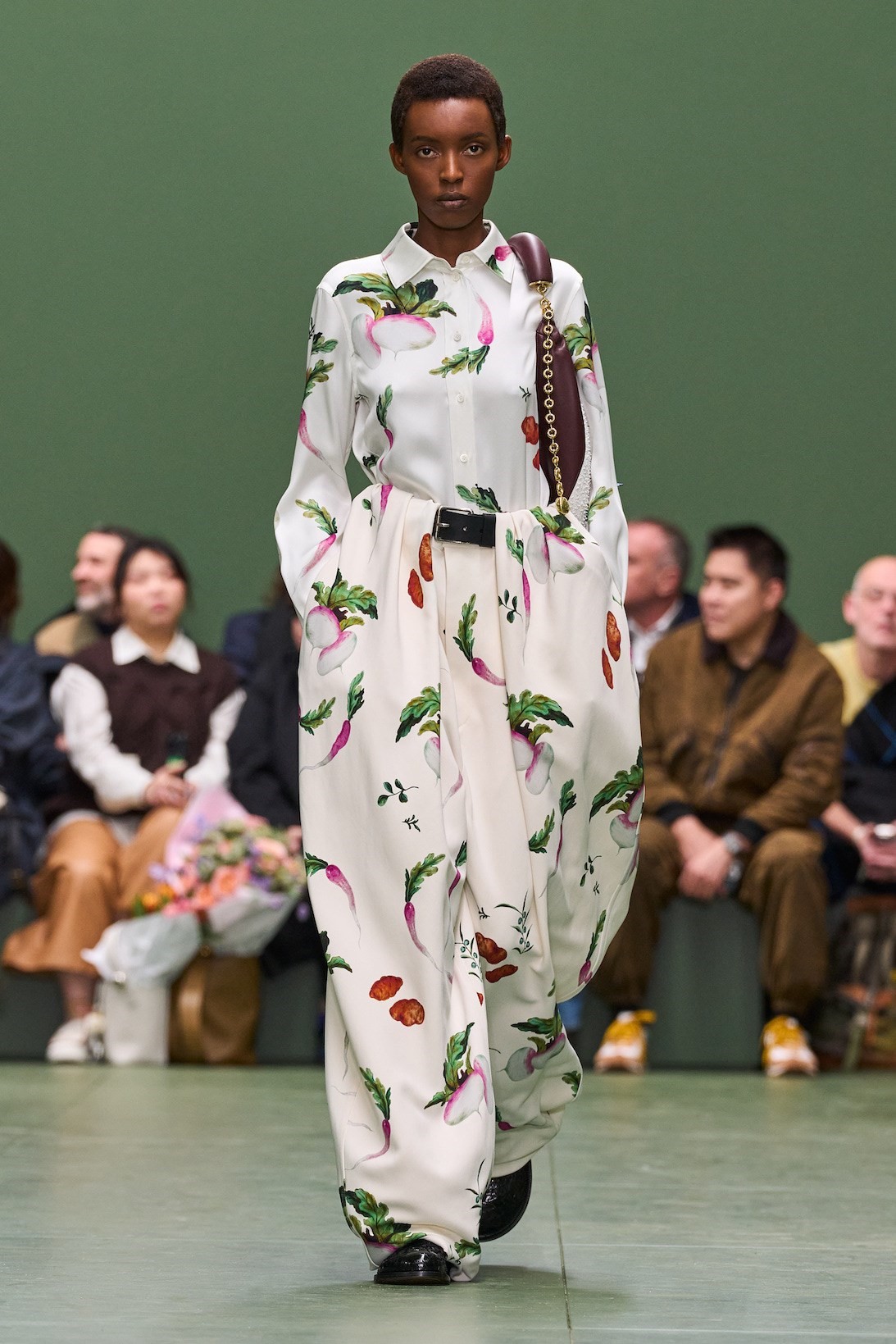
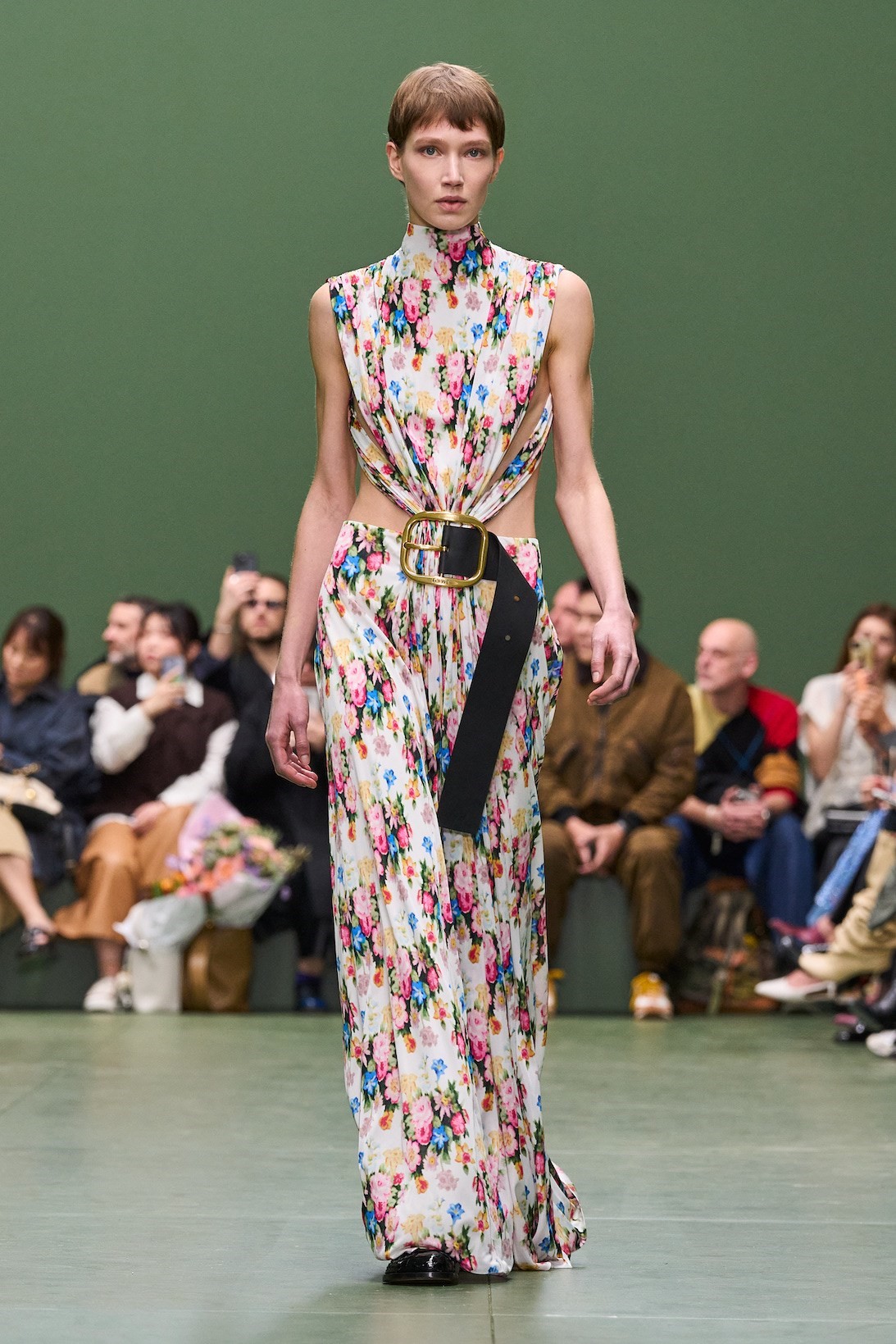
Modernity found within their history is another thing that unifies these designers. Yamamoto’s final five outfits – elegant, strict skirt suits in grey with those bubbling bustles – could easily have seemed like relics from another age, either the 1880s or indeed the 1990s, but their cuts were new, pulled close to an unfettered body, magnificent without being at all grandiose, glancing back without being old. This was a Yamamoto show for the ages, soaring up there with his very best in a career that has ebbed and flowed over 45 years – as to be expected – but which seems to be reaching another crest of enthusiasm. His audience was packed, filled with artists and fellow designers who came to watch a master at work. And he delivered.
The audience at Loewe was very different – the musician Shawn Mendes, the actors Brie Larson, Meg Ryan, Catherine O’Hara and Ruth Negga – but Anderson has a similar way of shaking the dust out of old things. He talked about the importance of provenance with this collection, the notion of knowing where things come from, and being able to trace their paths. “Why things have meaning,” he said backstage. In part he was thinking of the interiors of the interwar period, where designers mixed antique Chippendale chairs and Pinchbeck paintings with modern pieces to create a feeling of heritage, age and patina, even within the hyper-new homes of the rich and powerful. Money can buy you class – and interestingly, that’s something designers have been doing ever since. So there were interior echoes in Anderson’s embroideries and ceramic patterns, curtain ruching and silvered wooden embroideries on the lapels of jackets. The bags and shoes were embroidered as well, like mini works of art, but they weren’t the focus. Nor should they have been.
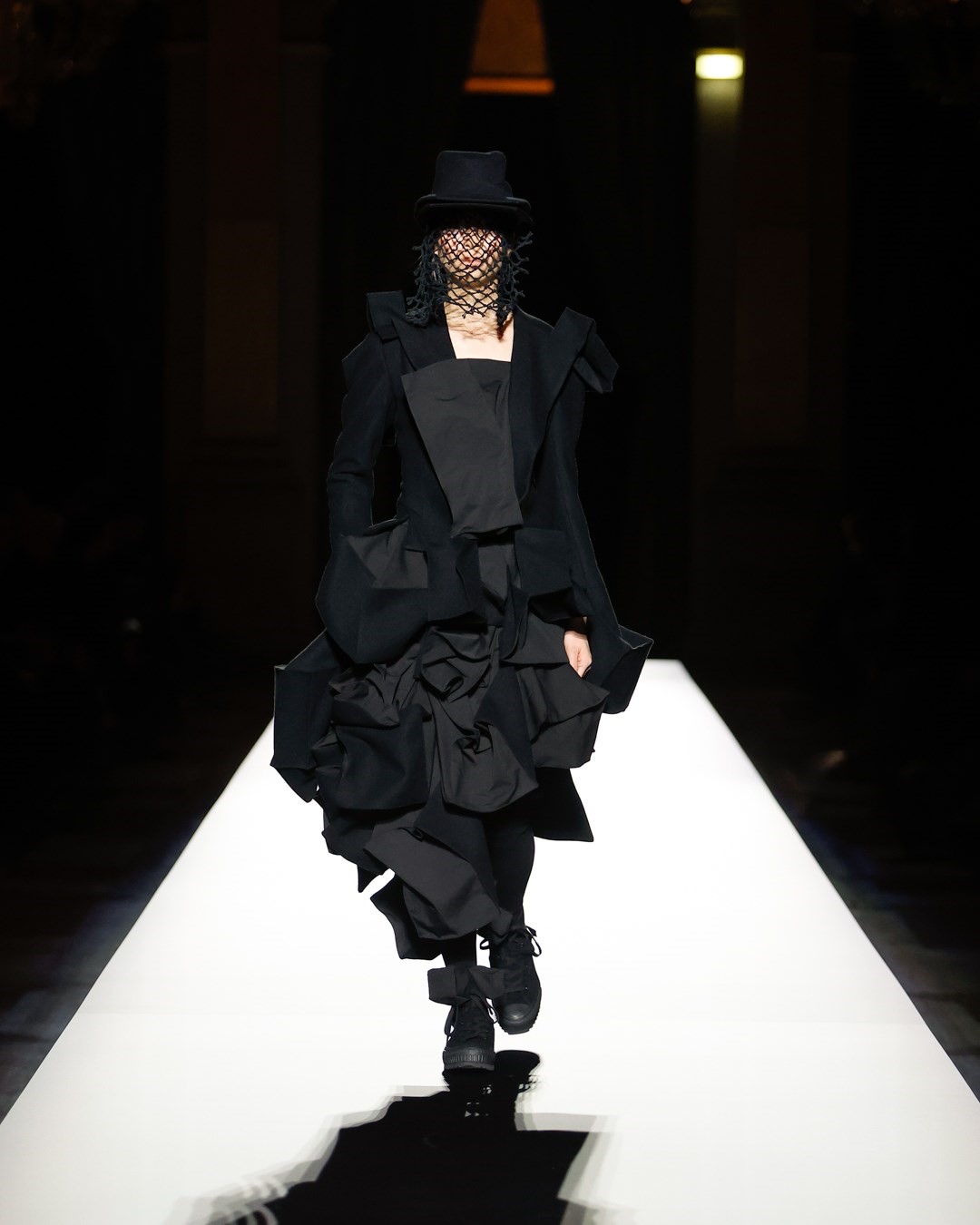
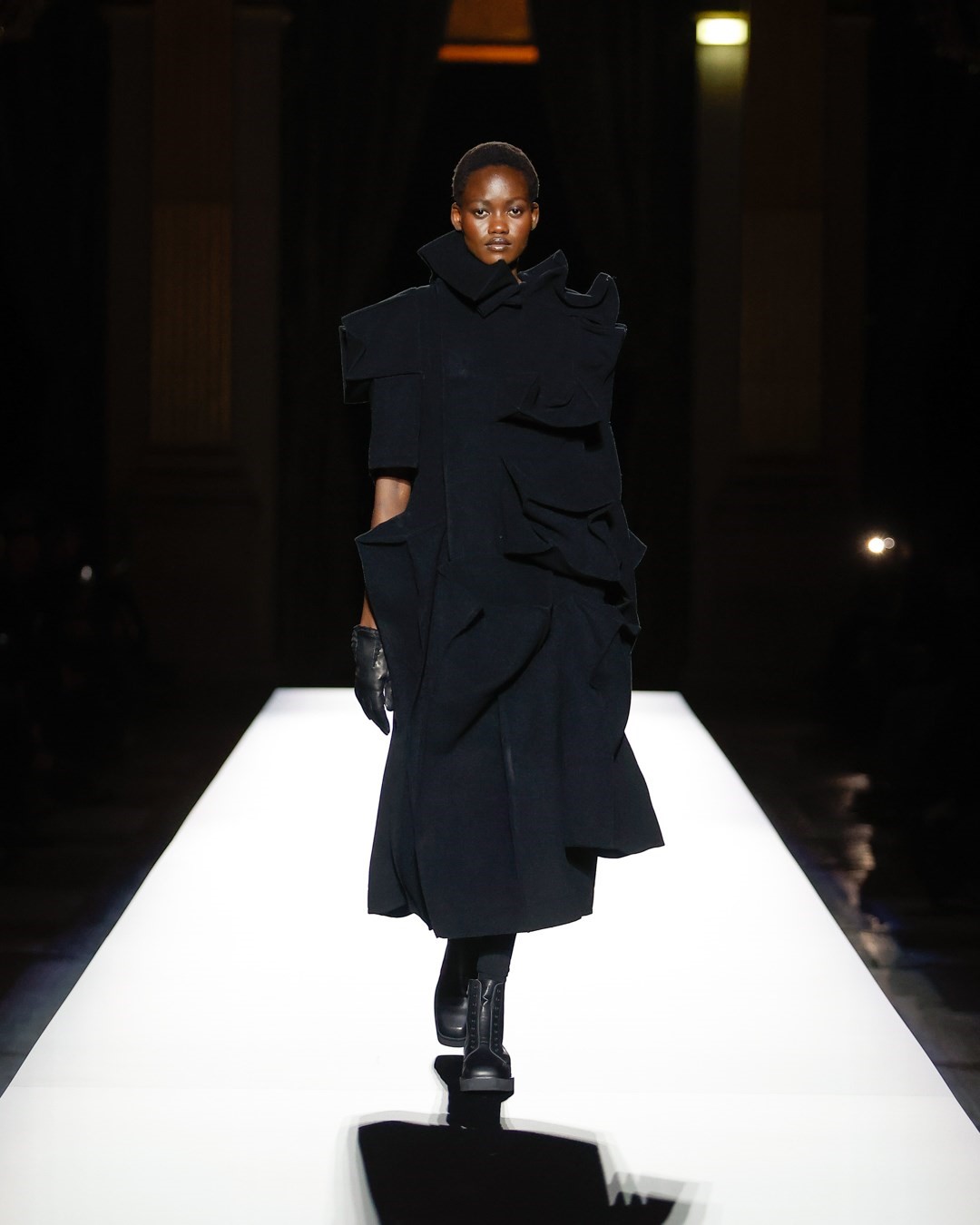
Recently, Anderson told the Telegraph: “I don’t believe in being a 70-year-old designer.” His implication being that older generations should make space for the new, rather than hanging on to power – although perhaps he’s talking about something much wider than fashion, certainly wider than its design. The current president of the United States turns 82 years old this year; if his main contender takes power, he will be 78. I would love to know how Yamamoto would counter Anderson’s assertion – but in a sense, his collection did. Yamamoto’s clothes did not seem pitched at youth, they were not an old’s man’s vision of how his children, or indeed grandchildren, should look. Rather, they were a timeless and universal idea of beauty, one that would have looked as perfect at the very start of Yamamoto’s career as it does today. The same is true of Anderson – despite his comparative youth, there is a rare sophistication to both his thought processes and their outcome, that ensure his clothes can never be pigeon-holed to one woman, one age, one place or time.
Universal beauty. Maybe that’s the fundamental connection between Anderson and Yamamoto. Can’t put an age on that.
